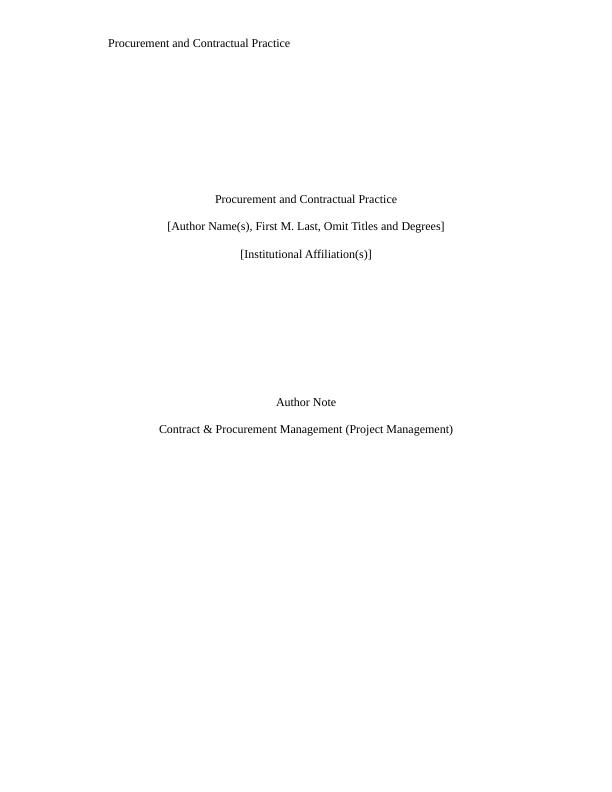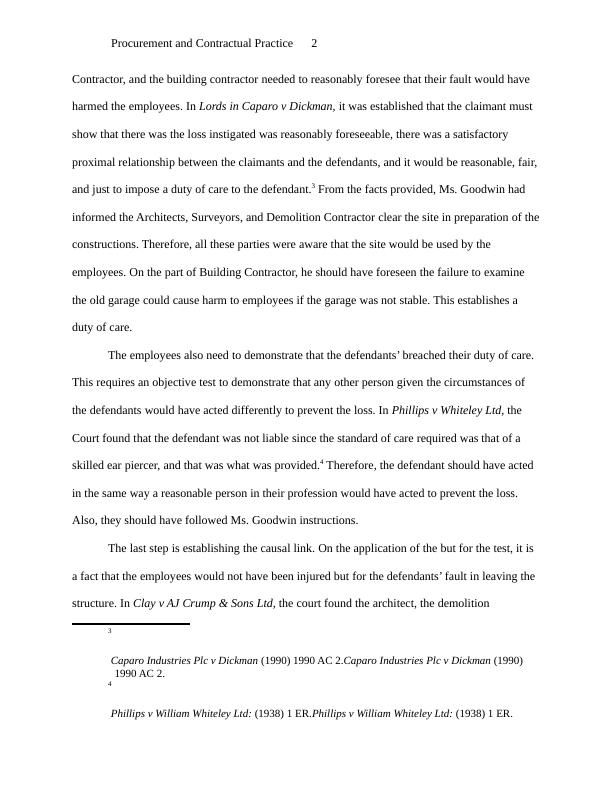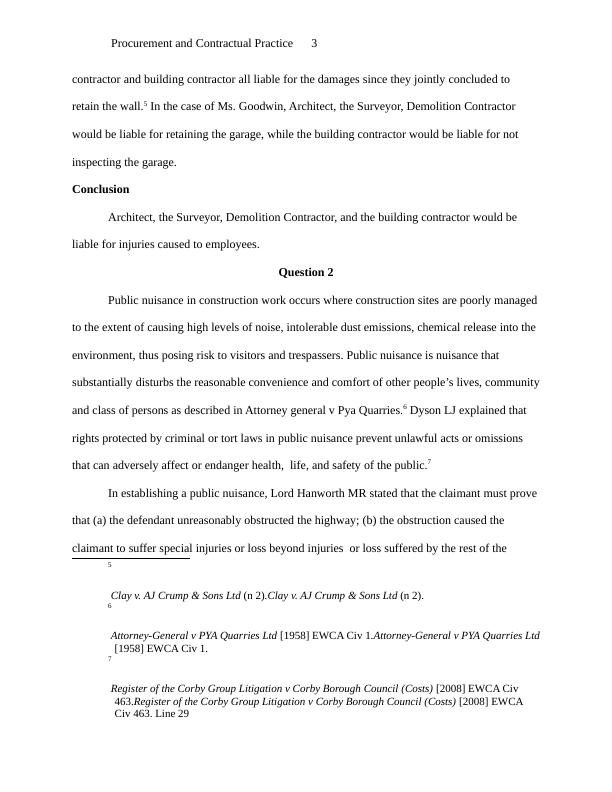Procurement and Contractual Practice
11 Pages3096 Words448 Views
Added on 2022-12-15
About This Document
This document discusses the concepts of procurement and contractual practice in the field of project management. It covers topics such as liability, negligence, public nuisance in construction work, and the Joint Contract Tribunal (JCT) standard form for building contracts. The document provides insights into the rules of law, application of these concepts, and their implications in real-life scenarios. It also explores the different mechanisms for dispute resolution in the JCT forms. Overall, it offers a comprehensive understanding of procurement and contractual practice in the construction industry.
Procurement and Contractual Practice
Added on 2022-12-15
ShareRelated Documents
End of preview
Want to access all the pages? Upload your documents or become a member.
Procurement and Contractual Law
|15
|3835
|1
Assignment On Contract Law & Common Law - Breach Of RIghts
|10
|3515
|141
Business Law: Negligence and Recovery of Economic Loss
|6
|1050
|191
Issues In Business and Corporation Law
|6
|1021
|100




